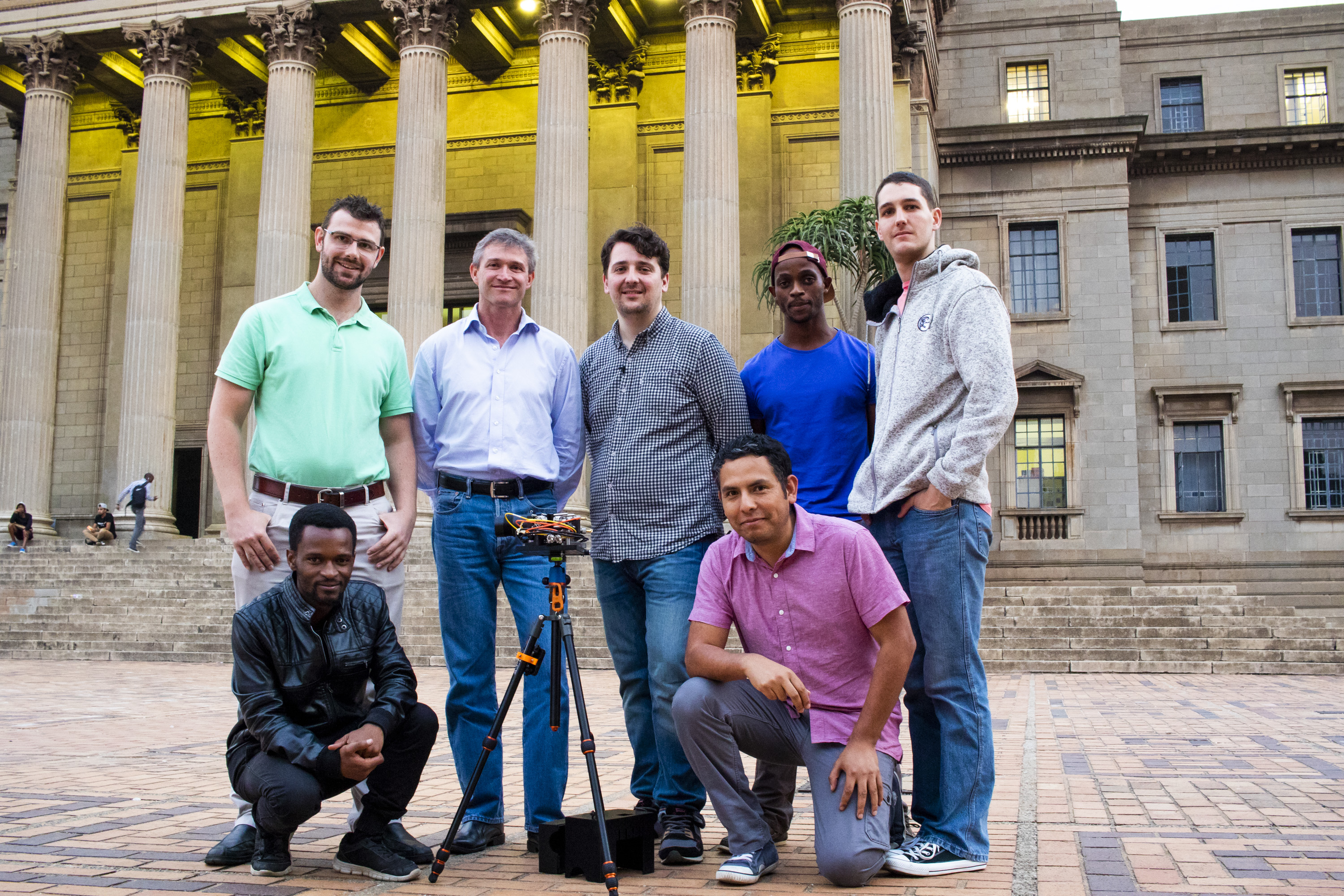A prototype of the device that could connect remote places to fast
The African continent has 4% of the world’s internet data access with those living in rural areas and on a low disposable income being the most affected by this “digital divide”.
To lessen that divide, a team of University of the Witwatersrand physicists and international engineers believes photonics may be the solution to connecting communities.
Photonics is the study of technology (for example optical fibres) which transmits and modifies streams of photons or particles of light.
The group of researchers, coordinated by Professor Andrew Forbes from the School of Physics and Professor Ling Cheng of the School of Electrical and Information at Wits, recently gathered to present their research on free-space optical (FSO) links which are a network of communication channels through the air.

[A team of Wits physicists and engineers teamed up to build a prototype device that could solve Africa’s digital divide. (Wits University)]
FSO links are much like WiFi but are faster and have a wider reach. How this optical communication technology works is that it uses free space such as air to wirelessly transmit data in contrast to using solids such as fibre cables.
Forbes told the Mail & Guardian that FSO technology is like having a laser pointer which is modulated to carry information so that the laser can point from one place to another. “We are hoping our technology will be able to transmit information from one village to another” much like a laser beam of light travelling from a pointer to something on a board.
Forbes further explained that since wifi access is available anywhere, it’s not very secure because everyone can access that connection which is why the team of researchers has introduced quantum technology to make the connection “fundamentally secure”.
The government is currently not on board with the project which is why Wits has released a statement bringing awareness to the problem of internet access, but there is space for the government to intervene according to Forbes.
“Government doesn’t play in this space but it already has Broadband technology. This technology just needs to be implemented now.”
According to the statement, if the “digital divide” was addressed using “state-of-the art optical fibre” then 160 000km of fibre would be needed which would be very costly.
The team of researchers is working on creating a multi-hop FSO link that will be able to cover a wide range of geographical space to start addressing the digital divide.
A collaborative report launched by the Worldwide Web Foundation, the Alliance for Affordable Internet and UN Women in March, revealed that although governments across Africa have collected more than $400-million meant to close the gender divide in access to internet, these funds are sitting unspent.
READ MORE: African governments leave women out of digital revolution
Forbes said that: “What is tragic is that economic upliftment is hindered by these divides, yet they are widening not shrinking with time.”
According to the statement, internet connection in South Africa is a priority because broadband transmission has been estimated to raise gross domestic product by R130-billion with the potential of creating 400 000 jobs.